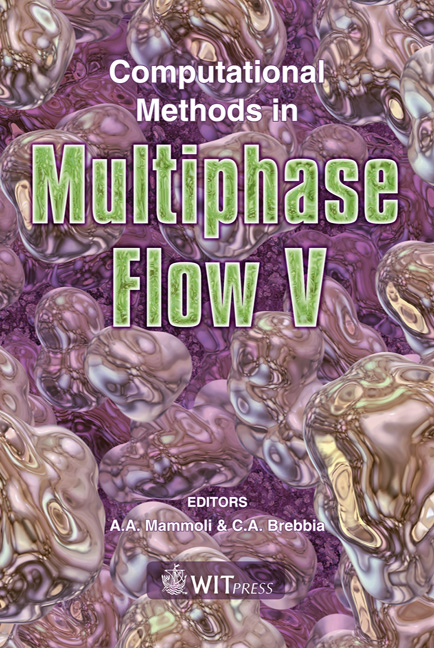Numerical Simulation Of Gas-solid Flow In Ducts By CFD Techniques
Price
Free (open access)
Transaction
Volume
63
Pages
10
Page Range
45 - 54
Published
2009
Size
1,057 kb
Paper DOI
10.2495/MPF090041
Copyright
WIT Press
Author(s)
R. K. Decker, D. Noriler, H. F. Meier & M. Mori
Abstract
Numerical models are nowadays used on a large scale for the simulation of two-phase flow processes in the chemical industry, due mainly to their low implementation cost and important results. However, to find the best numerical models in such processes, validation with experimental data is required. In this sense, the main objective of this work is to apply a CFD model under Eulerian-Eulerian framework for the gas-particle flow, with the capability to predict the fluid dynamics of the two-phase flows in vertical and horizontal ducts separated by 90° elbows. A three-dimensional and transient model has been applied for predictions of volume fractions, pressure, velocities and turbulence properties fields. For the momentum transfer between phases a drag model based on the application of \“Churchill” asymptotes techniques was used to obtain a continuous function for all flow regimes. Furthermore, the wall effects over the particulate flow have been investigated. The mathematical model was applied in CFD commercial codes for numerical studies and compared with experimental data obtained by the research group at Lehigh University. The model is solved using the finite-volume method with variables located in a generalized co-ordinate system. The main results present the volume fraction and velocities profiles as a function of the time and position. In addition, the mean velocity and particle concentration of the radial profiles were compared with experimental data in different axial positions of the vertical duct. The results showed a good agreement for the mean particle velocity with the increment of the axial position. Keywords: CFD, gas-particle flow, ducts, elbows, numerical simulation.
Keywords
CFD, gas-particle flow, ducts, elbows, numerical simulation





